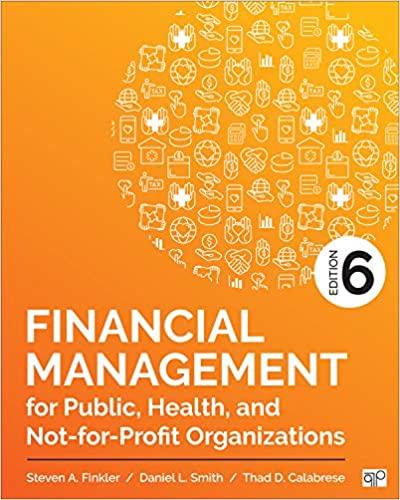Question
When preparing capital budgeting analysis for a new project, Chris Johnson, a chief financial officer at BT Industries, faced a dilemma. The project involved a
When preparing capital budgeting analysis for a new project, Chris Johnson, a chief financial officer at BT Industries, faced a dilemma. The project involved a production of new type of shipping containers, which were significantly more durable and had a considerably longer useful life compared to conventional containers used in the industry. The year was 2009, and the equipment necessary for producing the containers was being sold for $750K. Each year, this cost is expected to increase by 30%. The useful life of the equipment and the project is 6 years. Mr. Johnson estimated that during a recovery year, the project will generate net cash flows of $500K per year, while during a recessionary year, the project will lose money, with an expected net cash flow of $-100K per year.
Because the economy suffered a significant decline just a year prior, there was uncertainty about the economy in general, and, very much affected by the economy, the demand for shipping and containers. Market analysts predicted that 2010 provide certain information about the likelihood of recovery. At this point, in 2009, the likelihood of 2010 being a recovery year is estimated at 45% and the likelihood of 2010 being a recession year is estimated at 55%. If 2010 is a recovery year, the likelihood that recovery continues in 2011 and all subsequent years is 80%, and the likelihood of these subsequent years being recessionary years is 20%. If recession continues in 2010, the likelihood that 2011 and all subsequent years will be recovery years is 20%, and the likelihood of these subsequent years being recessionary is 80%. In 2011, the market gets resolved, and everyone will know the state of the economy for the foreseeable future with certainty.
Since he has not dealt with uncertainty regarding the future state of the economy before, Mr. Johnson is bewildered and asks your help in determining the course of action regarding this opportunity. In particular, should the firm buy the equipment in 2009, 2010, 2011, or not buy at all? Mr. Johnson has estimated that the discount rate to use is 10%. Assume that the project has no tax implications, i.e. the tax rate of 0%. Also assume that the firm can shut down the project any time at a one-time cost of $50K.
- What is the NPV of investing into the machine in 2009? __________________
- What is the NPV (in year 2009) of delaying the investment until 2010? __________________
- What is the NPV (in year 2009) of delaying the investment until 2011? __________________
- What strategy with respect to this investment should the firm follow? In other words, when should the firm invest and under which circumstances? Think carefully and explain your answer.
Step by Step Solution
There are 3 Steps involved in it
Step: 1

Get Instant Access to Expert-Tailored Solutions
See step-by-step solutions with expert insights and AI powered tools for academic success
Step: 2

Step: 3

Ace Your Homework with AI
Get the answers you need in no time with our AI-driven, step-by-step assistance
Get Started


